Scientists aren’t prone to throwing caution to the wind. They work hard to establish ‘controls’ to help ensure validity and reliability of experimental outcomes.
So, what happens when a scientist becomes a textile artist who chooses a printing technique offering zero reliability? As you’ll see below, it’s an incredible mashup of mark-making, colour and stitch.
Leah Higgins worked as a scientist in the chemical and textile industry, so she understood the possibilities of dyes. But her choice to use her signature ‘breakdown’ printing process forced her to literally lose control.
You can read details about the technique below. But, in summary, the artist first lays down a resist, then the dyes take over from there.
At first, it wasn’t easy for Leah to embrace the serendipity of the process. But now she wouldn’t work in any other fashion.

Industrial inspiration
To date, my sources of inspiration have mostly been grounded in the industrial heritage and social history of the Manchester area in the northwest of England. It’s where I live, and my work often references industries and buildings that have a personal or family connection.
For example, I worked as a scientist in the chemical and textile industry and was based in a converted spinning mill for many years. Ruins 9 Cottonopolis Revisited is one of several pieces that reference the cotton mills littered across Manchester.
I also create art based on my emotions and their connection to place and time. In my Cadence series, I took shelter from the stress of the pandemic by immersing myself in the process of making. I worked with my favourite colours and techniques.
In Cadence 7, I tried to evoke the sense of calm and joy that comes from a repeated activity such as printing and stitching. More recently, I’ve started work on a new series inspired by the colours of the North Ayrshire coast and the emotions that course through me while standing on the shoreline.

Science foundations
I don’t remember learning to sew or knit, but my mother and grandmother believed a woman should always have a practical something ‘on the go’. But at age 14, when my school asked me to choose science or art, I chose science.
For many decades, the ‘creative’ me was focused on making and repairing clothes and things for the house. And as I was never fully happy following other people’s patterns, I taught myself to create my own clothing patterns. I took pride in getting things perfect, and that attention to detail is now evident in my textile art. I don’t do wonky seams or leave threads hanging!
“Earning a chemistry degree and PhD in textile science, followed by a career in the textile industry has had a great influence on my work.”
Leah Higgins, Textile artist
Understanding the properties of different textiles and the chemistry of dyeing has helped me transfer my ideas onto fabric.
Those experiences also underpinned my teaching practice and helped me write books about colour and screen printing. It has also driven my interest in our industrial heritage.


Important mentors
I started making patchwork bed quilts and wall hangings in the 90s, usually giving them as gifts. Although I created my own designs based on traditional patchwork patterns, I soon wanted to design pieces from scratch.
I took City and Guilds courses in Patchwork and Quilting, including an online diploma with Linda Kemshall. I learnt lots of techniques, but I didn’t like working into sketchbooks and wasn’t yet ready to call myself an artist.
That transition happened over a five-year period during which I took a series of workshops with Leslie Morgan and Claire Benn. Those amazing women changed my life. They taught me so much in terms of techniques, including introducing me to breakdown printing. But they also gave me the tools I needed to develop my own creative practice to become an artist.
“I wanted to learn how to transfer a source of inspiration into a finished quilt.”
Leah Higgins, Textile artist

Colours & marks
My initial planning takes place in my head. I like working in series, so it’s important that the ideas I choose have enough depth to sustain multiple pieces, often created over several years.
I don’t work into a sketchbook as such but will sometimes jot down ideas in a journal. I like to read around my subject, to visit relevant places and collect imagery I might incorporate into my work.
Once I’m ready, I always start by playing with colours and marks. I might try to match colours to my source inspiration, or I might choose colours that ‘feel right’.
I work directly onto fabric using breakdown printing and other screen printing techniques. I also sometimes use dyeing techniques to create a cohesive collection of fabrics that are unified by colour and dense mark making.

“I don’t often get it right the first time. There will be fabrics I discard and fabrics that need additional work.”
Leah Higgins, Textile artist
Eventually I’m ready to construct my quilts. I cut my fabrics into simple strips or rectangles and often use value change to arrange them in an interesting way.
Once stitched together, I layer my work and add lots of straight-line machine stitching, as this seems to help the individual pieces of fabric blend together. In fact, viewers are often unaware such a large work contains several hundred pieces of fabric.
Once quilted, I often use appliqué or print to add elements that reference specific aspects of the inspiration source.
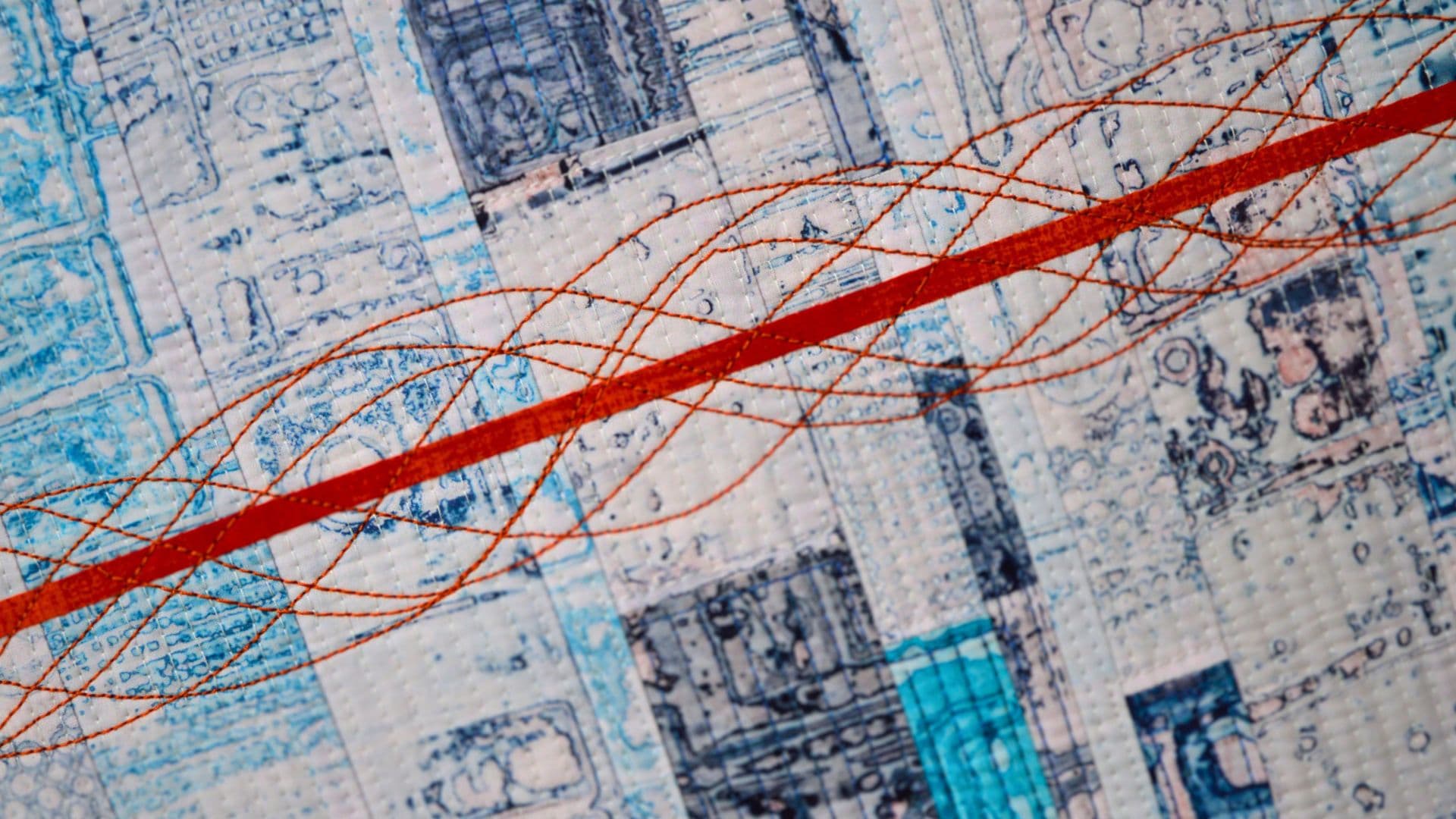
Breakdown printing
One of my favourite printing techniques is breakdown printing. It’s a form of screen printing in which I apply thickened dyes directly to the back of a screen, then let the screen dry completely. This dried dye acts as a resist when I print my screen. As I pull the screens, using either print paste or more thickened dye, the dried dye starts to wet out and transfers colour and marks to the fabric.
Each time I pull the screen more of the dried dye breaks down a bit, resulting in unique marks and patterns for every print.
“I love the serendipity of breakdown printing and the fact that I’m not 100 percent in control.”
Leah Higgins, Textile artist
There’s something wonderful about starting with a piece of white fabric and adding colour and marks.
I’m excited to be hosting a workshop for the Stitch Club in which members will learn my breakdown printing technique. My aim is to make screen printing accessible to those who have never printed or used dyes before. The technique is very forgiving, so beginners won’t have to worry if their prints don’t line up or the fabric gets messy.
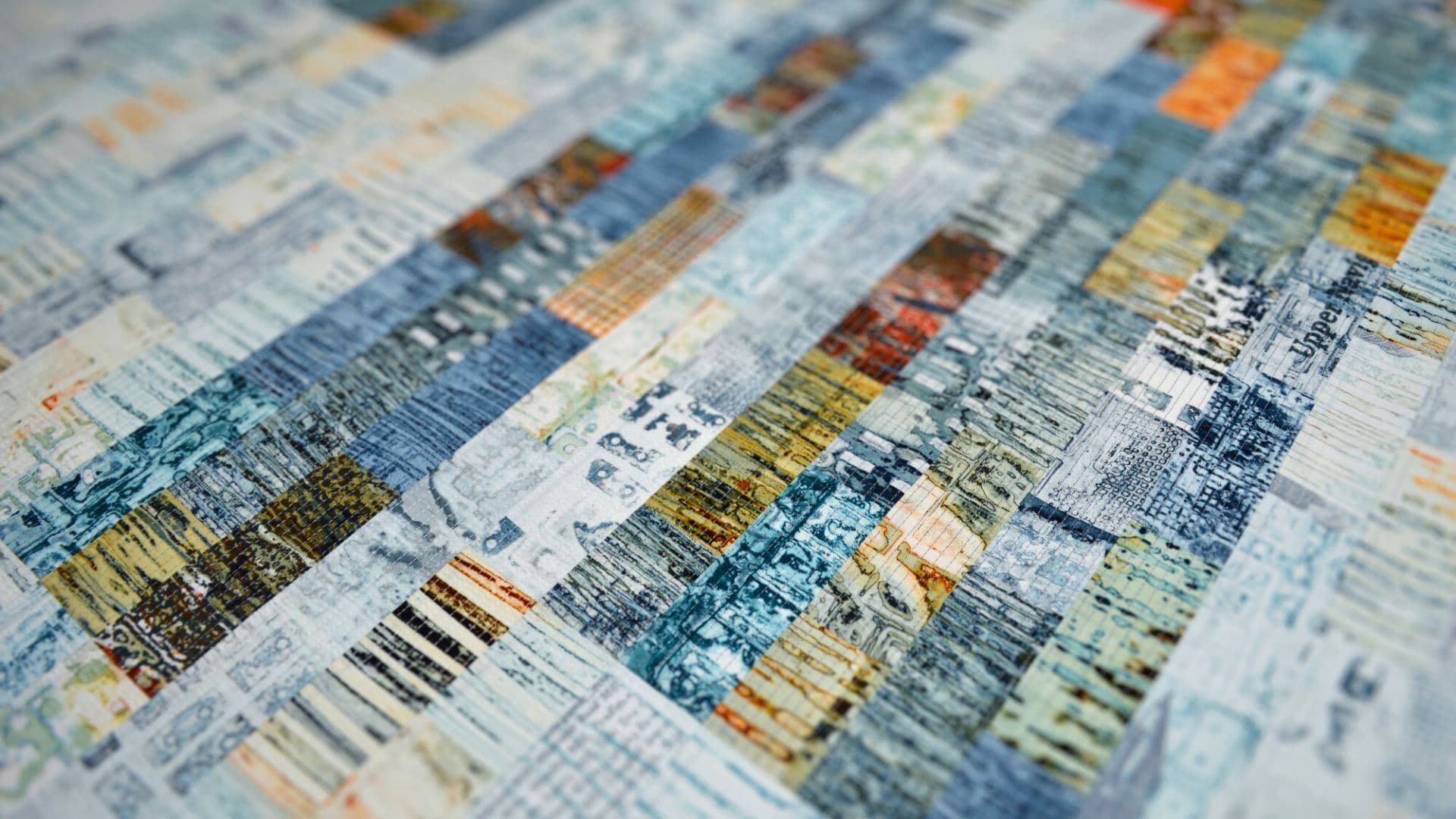
Poplin love
Most of my art quilts were made using a lovely cotton poplin. Poplin has a very fine, dense weave and a smooth surface which takes colour beautifully, giving the printed colours a brightness that you wouldn’t get with plain cotton.
That said, I used a linen/cotton blend for my Artefact series. I wanted to combine printed marks with a more textured fabric. I buy all my fabric from Whaleys of Bradford as I have better control of colour if I use fabric from the same supplier.
“Poplin gives the printed colours a brightness that you wouldn’t get with plain cotton.”
Leah Higgins, Textile artist

The mighty Bernina
I bought my first Bernina sewing machine in 2007. It was a Bernina 440 that I had used in a workshop. Then a couple years ago, I replaced the 440 with its equivalent, the Bernina 435.
The Bernina is a heavy machine and gives a very crisp straight line which is important to me as all my quilts are finished with dense straight line machine quilting. And they’re both true workhorses. My first machine did over 14 million stitches before becoming my backup machine!


Must-have tools
Humble masking tape is a must-have when I’m printing. But I also use it on my quilts as a guide for straight-line stitching when I don’t have a seam to which I can stitch parallel lines.
The walking foot on my sewing machine is also essential. It not only helps to smooth quilting but also helps when I’m machine stitching long seams. I’ll also use it on rare occasions when I want to stitch curves, even quite tight ones. I get better control over stitch length than I would if I used free-machine quilting.
Also, I always have a notebook and pen next to my sewing machine. I can jot down the ideas that often come to me when I’m seated at my machine.
“My work is art and should not be excluded from exhibitions because of the media I choose to use.”
Leah Higgins, Textile artist
Textile art bias
As an artist, I’m constantly frustrated by the association between textile and craft within the ‘white-walled gallery’ fine art community. Yes, I take pride in mastering my craft. But my work goes beyond craft.
On a more personal level, my biggest challenge is time! My creative process is time consuming, and it can be challenging to balance art with my teaching practice and family life. I’m reducing my teaching practice as part of my move to Scotland, which will hopefully free up more time to create!


The joy of writing
To date, I’ve written three books, including one dedicated to the breakdown printing process.
When I worked in a technical role in a manufacturing company, I often had to write detailed technical instructions for colleagues or customers with limited knowledge of the subject. So in 2018, when I changed career and started teaching screen printing and other surface design techniques, it was both natural and enjoyable to write detailed notes for my students.
A good friend who had self published her own books suggested I give it a go, so I did. And I loved it! Each of my books was written during quiet teaching periods, so I could set my studio up for photography and really focus. I completed each book in three to four months.
“I see my books very much as an extension of my teaching practice rather than my art practice.”
Leah Higgins, Textile artist
A big move
Looking toward the future, I’m interested in seeing how my ideas and sources of inspiration change as I move from an industrial city to a small town on the coast. My links with industry will fall away.
I’m already working on a new series using colours associated with the coast. I wonder if I’ll be inspired by local history, too?
With more time, I’m hoping to explore different printing processes and seeing how I might incorporate printed paper into my work.
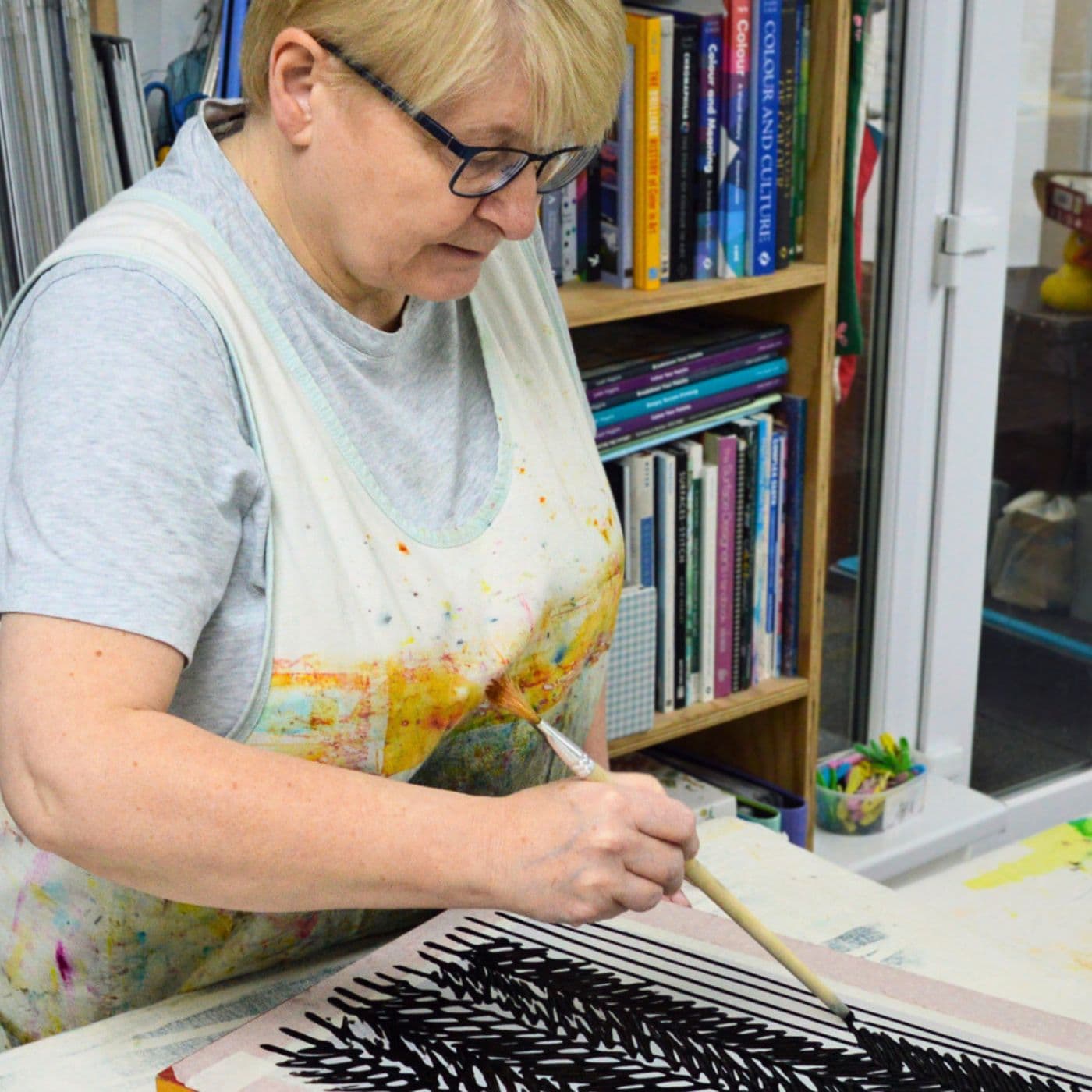
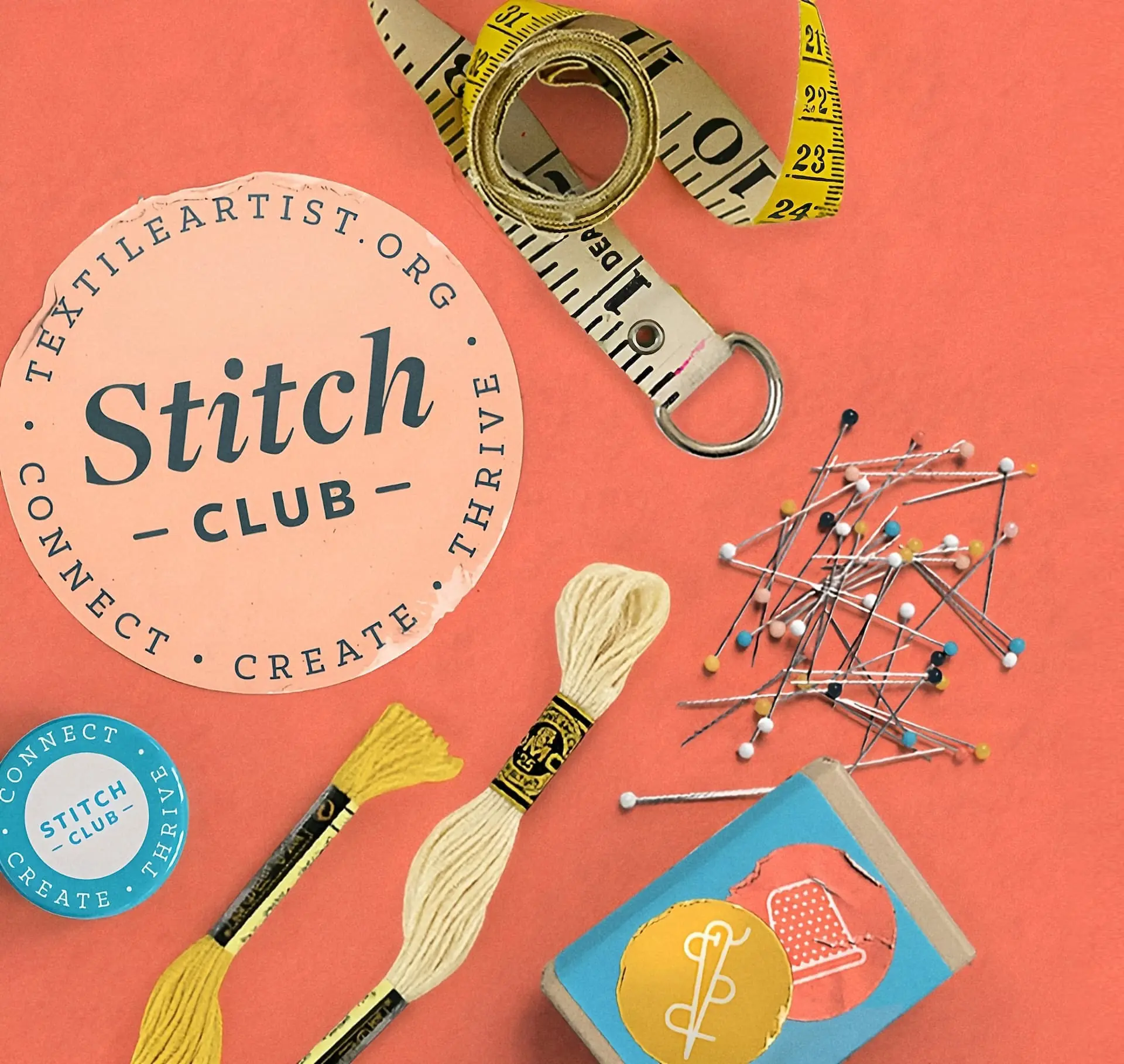
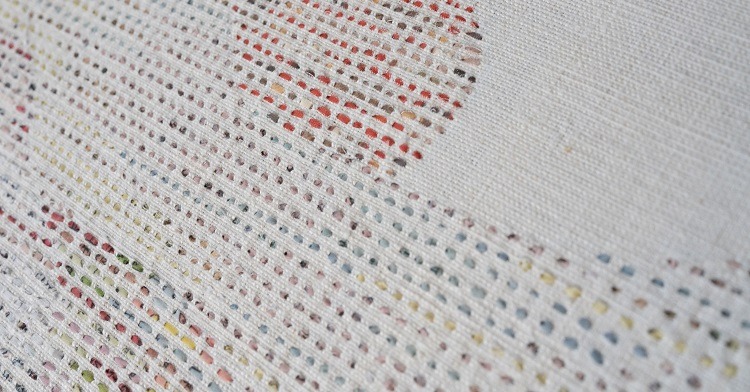
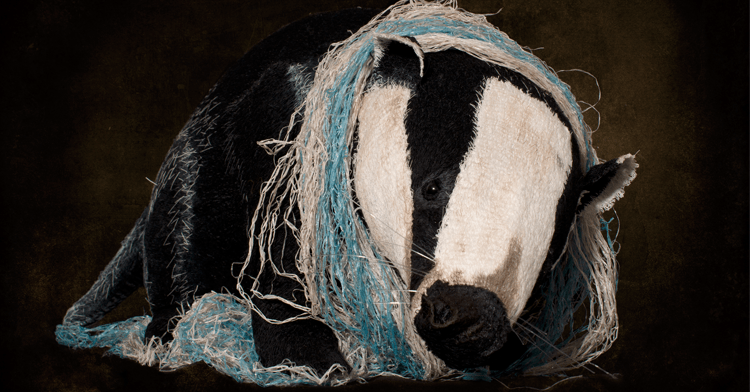
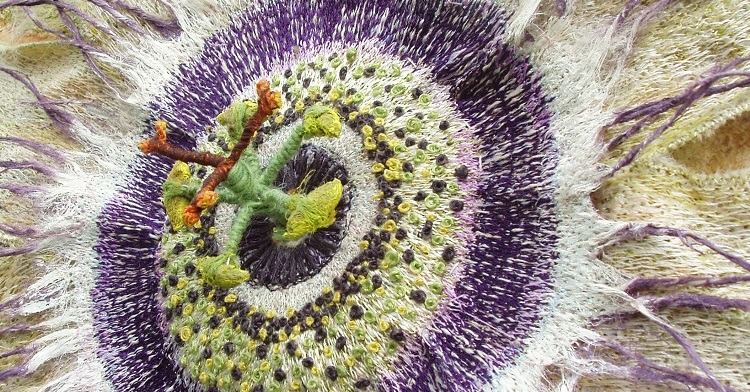
![Contemporary textile artist Lisa Soloman featured image||Lisa Soloman - Sen [1000 doilies]](https://www.textileartist.org/wp-content/uploads/Lisa.jpg)
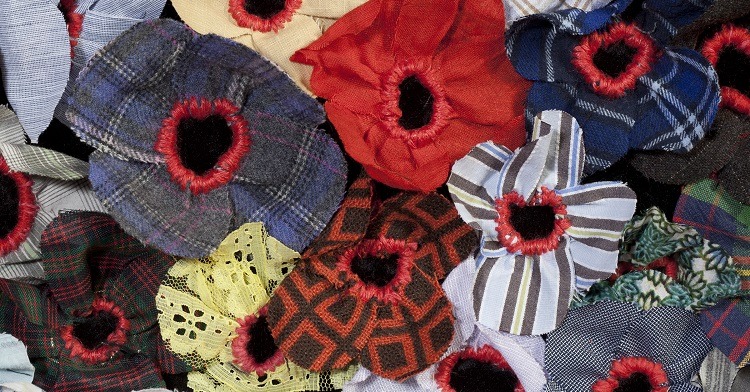
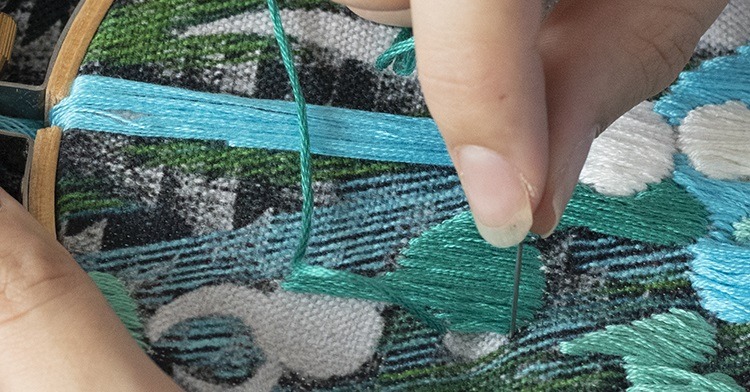
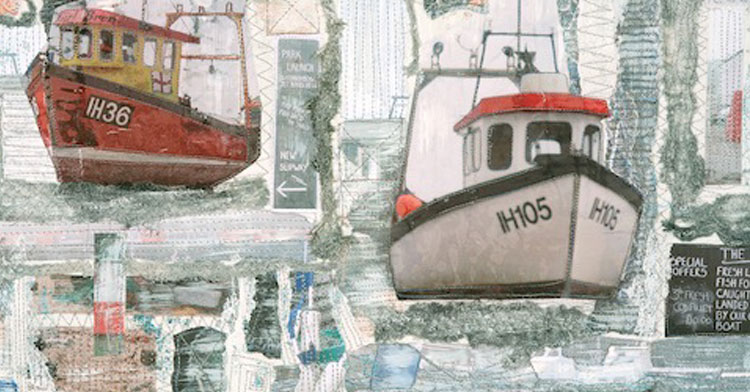
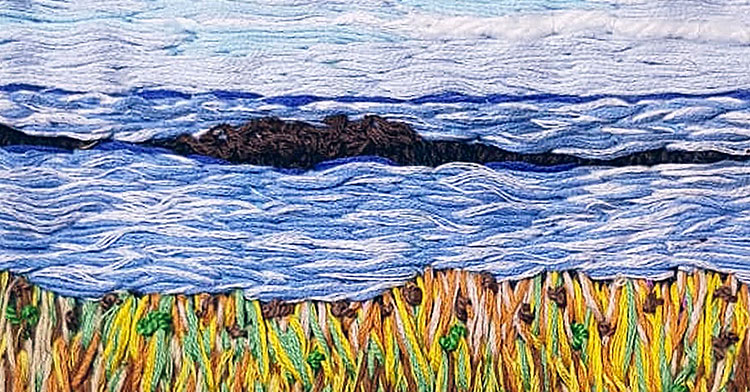
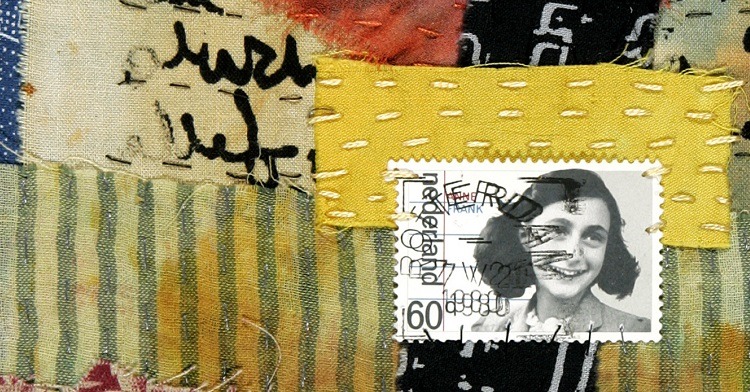
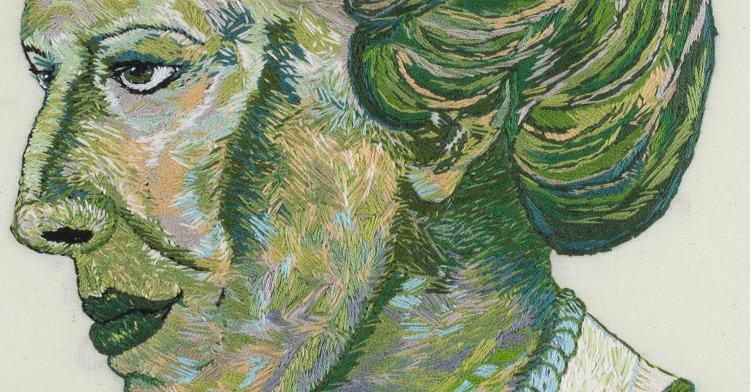
6 comments
Chris Lovie-Tyler
Gorgeous work! The designs/textures remind me of the work of generative artist Tyler Hobbs (https://www.tylerxhobbs.com), who allows a certain amount of “controlled randomness” in the computer code he creates to produce his work. There’s a pretty interesting video about his process on his About page (https://www.tylerxhobbs.com/about). It’s worth watching just for the sweaters he wears alone!
I’m a painter, myself, but I love working with materials that are messy or difficult to control in some way (watercolours, pastels, charcoal, acrylics, pigment sticks, ink)—and varying implements, not just brushes, to apply the materials. Often they introduce surprising effects or elements I wouldn’t have come up with if I’d had full, tight control. That’s a big part of what I enjoy about art making: the mix of intention and unpredictability.
Fantastic website, by the way! I love how you have a prompt at the top of the comment section.
Siân Goff
Thanks so much for your comment, Chris. It’s so interesting to hear about your process and choice of materials to help you embrace something random and unique in your work. And thanks for the suggesting Tyler Hobbs’ work. We will check him out!
Katrina Embling
The more serendipity the happier I am! I had a wonderful summer last year exploring breakdown printing after buying Leah’s book. So much fun!
Siân Goff
That’s so great to hear, Katrina! There’s so much more freedom in embracing the process and letting go of the need to control the outcome. Thanks for your comment!
Mary
When one has been working with a timetable and rules that seem to go with it it can be difficult to allow yourself to be totally free with what you create. It sounds as though you have learned that a R work is beautiful and impressive. Let go completely and who knows what you will create ? Many thanks for the sharing.
Siân Goff
You’re right, Mary. It is so difficult to let go, Leah is very inspirational! Thanks for your comment.